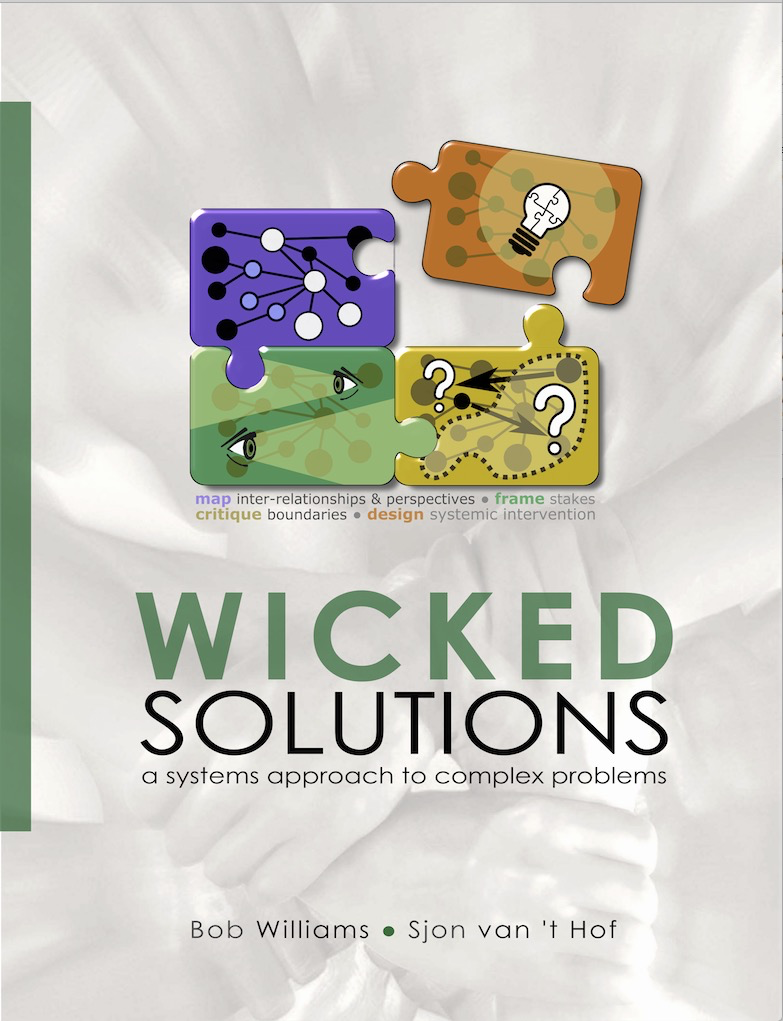This post summarizes chapter 5 of Systems approaches to managing change : a practical guide. It is about soft systems methodology (SSM) and was written by its originator, Peter Checkland, and John Poulter, a practitioner. The focus question of my concept map of SSM is useful in that it points to the notion that SSM is a generic human or social problem solving tool. This type of problems is usually fairly complex, which means that they cannot really be solved, only improved. Therefore Checkland prefers to speak of problematical situations. Their improvement can take place in 4 steps as listed in the box “SSM activity pattern”. These steps are iterative, so it can happen that while debating several models of possible “solutions” in step 3 it is found out that the explorative step 1 needs to be expanded.
Exploration can involve drawing a so-called “rich picture”, which is an innovation for which SSM is perhaps best remembered. It serves to depict the problematical situation and consists of hand-drawn pictures of broomstick people and other simple imagery, linked by arrows and the bare minimum of explanatory text. Exploration can be enriched by 3 types of analysis. In a complex situation there are bound to be different perspectives of the people or “issue owners” involved, e.g. pupils, teachers, and parents all have different worldviews, which in turn will help in building different models for a really good discussion. The social analysis serves to determine the cultural feasibility of the different models to be debated. Cultural feasibility is an important aspect to be debated. Finally, there is the political analysis, which deals with who has the power to decide whether a certain model will be implemented or not.
After the exploration comes the model building. This, too, is done in a number of steps. The first step is to define the purpose of the model in the form of the so-called “root definition”, which is of the form “Do P by Q to achieve R” and answers the questions of what, how, and why. This step is followed by the CATWOE analysis, which looks at 6 aspects of the transformation process: customers (or victims or beneficiaries), actors, the transformation, the worldview, owners (potential transformation stoppers), and the environmental contraints. The information obtained through this analysis is used to enrich the root definition. The next step is to design the so-called “purposeful activity model”, which is composed of about 7 (5-9) interdependent transformational activities. The model is complete once the criteria (the 3 E’s) for monitoring the transformation process are defined: (E1) efficacy : does the system work – is the transformation achieved?; (E2) efficiency : a comparison of the value (not necessarily monetary) of the output of the system and the resources needed to achieve that output – in other words, is the system worthwhile?; and (E3) effectiveness : does the system achieve its longer term goals? Monitoring is important, because it is the only way to be able to formulate recommendations in case the model needs improvement to achieve its goal.
After building one or more models, they can be used to structure discussion about the situation and its improvement. Soft systems methodology is a well-established approach and has been used thousands of times in a wide variety of settings, be it business, not-for-profit, personal, in the West, or in the global South. There is only one good way of learning SSM, namely by doing. Among the free, online material here is a handout that I found useful. Have fun!



